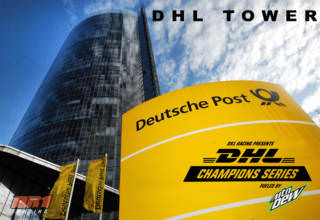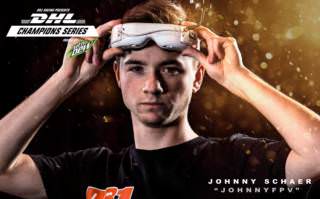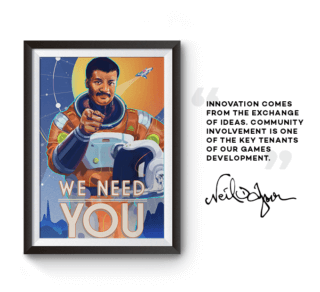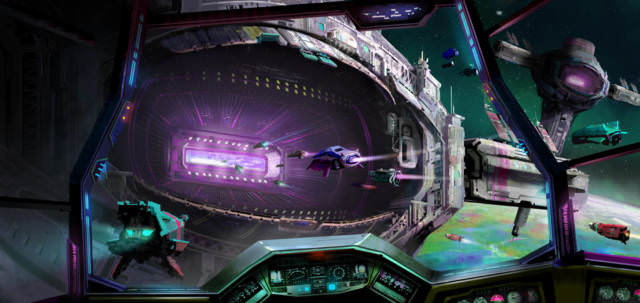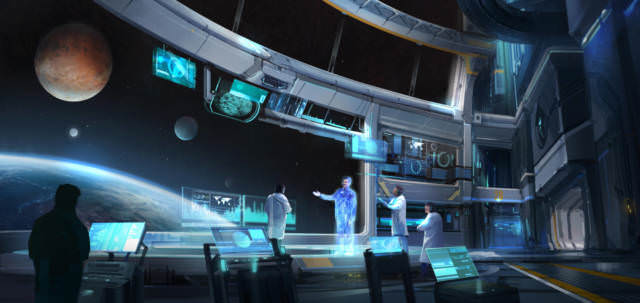Stat Of The Week: Tech brands with more female executives pay female employees more fairly and have higher employee retention and satisfaction, according to a new study by Redfin.
Del Taco Restaurants announced the appointment of M. Barry Westrum as the Mexican-American QSR chain’s chief marketing officer. He will be tasked with leading the brand’s global marketing strategy.
“Barry is an established brand leader who has deep experience in strengthening brands, enhancing marketing and innovation, and creating strong partnerships with operators and franchisees to build sales and profits,” said John D. Cappasola, Jr., president and CEO of Del Taco. “As we look to further embed our QSR positioning to continue to drive brand momentum, Barry’s strong track record in our category will be an asset to our leadership team.”
Westrum brings marketing experience from previous positions with brands like Taco Bell, KFC, Long John Silver’s, A&W Restaurants and Dairy Queen.
“I am excited to join this iconic brand and work with John and this talented management team as they approach their next phase of growth,” said Westrum. “Del Taco has had great marketing success to date, which has led to some of the best results in the restaurant category, and I look forward to working with the team to grow the Del Taco brand.”
Twenty-four hour breakfast chain IHOP has brought on a new chief marketing officer in Brad Haley. Haley will oversee development of the brand’s menus, both core and promotional, as well as development of off-premise dining options and enhancement of guest experience.
“Brad is an exceptionally talented marketer who is uniquely qualified to lead our marketing and culinary efforts, bringing a bold vision to the development of our distinctive menus, integrated breakthrough campaigns and omnichannel experience,” said IHOP president Darren Rebelez. “His award-winning industry experience, history of working collaboratively with franchise operators and innovative approach are the perfect ingredients for the future success of this iconic brand.”
Haley formerly served as CMO to CKE Restaurants, where he headed marketing and public relations for Carl’s Jr. and Hardee’s.
“I am thrilled to be joining the IHOP family since the brand is so beloved and has truly become iconic in American culture,” Haley said. “I love a great breakfast and, as the original, all-day breakfast leader, IHOP has always delivered that while putting a big smile on its guests’ faces.”
Sustainable packaged water company Boxed Water has hired Rob Koenen as chief marketing officer. Koenen will be responsible for leading the brand’s communication efforts and e-commerce opportunities—with a focus on expanding brand awareness and increasing consumer engagement—especially with millennials.
Koenen joins the company after working for UGG Brand as global vice president of product and marketing for their men’s, apparel and kid’s categories.
“Our highly engaged community wants to connect with Boxed Water through multiple touchpoints in their day,” said Daryn Kuipers, CEO of Boxed Water. “Rob is exactly the person we need to cultivate and extend thoughtful conversations around sustainability, with a proven record developing lifestyle brands.”
“Boxed Water delivers a strong and simple message around sustainability and the importance of taking care of our planet,” said Koenen. “That message is already attracting passionate consumers, especially millennials. Our job is to make sure more consumers have the opportunity to join us in making a sustainable choice.”
Pop-culture cable channel Pop welcomed Kent Rees as their first chief marketing officer, where he will oversee the network’s efforts to engage further with social media and other digital platforms.
“It is rare that you get to add such an accomplished media crusader, brand-builder and digital innovator to your executive team,” said Pop president Brad Schwartz. “Kent has a demonstrated track record of building disruptive channels, break-through multi-platform brands and award-winning creative. We are lucky to have him join our extraordinary team.”
Previously, Rees worked for the now-defunct network Pivot TV as executive vice president and general manager. Before that, he led IFC’s rebranding efforts as senior vice president of marketing.
“I am really excited to join Pop at this moment in time,” Rees said. “It’s a fast-growing network with a lot of momentum already built. I look forward to accelerating the brand and digital growth as we prepare for a terrific slate of original programming in the near future.”
Jose A. Dueñas has been hired as QSR chain Sonic’s new executive vice president and chief brand officer. Dueñas, formerly the executive vice president and chief marketing officer for Olive Garden, will be responsible for the end-to-end customer experience including marketing and culinary innovation, digital strategy, consumer insights, guest relations, concept development and overall evolution of the Sonic brand.
“[Jose’s] experience and impressive track record complements our recent appointment of Lori Abou Habib as chief marketing officer,” said Sonic CEO Clifford Hudson. “Jose brings broad expertise and talent to Sonic. We are confident his leadership and expertise will support continued growth of our brand.”
Music streaming service Tidal will be hiring a new CEO, its fourth in just over two years. Assuming the mantle is Richard Sanders, who comes on board at a hectic time for the company, who just released Jay-Z’s controversial album 4:44 and sold a 33 percent stake to Sprint.
Sanders previously spent five years at Kobalt Music Group, departing in May from his role as president.
Drone maker DJI has promoted Roger Luo to president of the company. Luo will work to grow DJI’s business in expanding international markets.
“As we continue to expand our global footprint, we need to strengthen our management in the area of operations,” said Frank Wang, DJI’s founder and CEO. “Roger has stood out in his executive management skills and holds a track record in operational excellence.”
Luo’s promotion comes after two years as DJI’s vice president of operations, overseeing procurement, production and logistics.
“DJI is a fast-growing high-tech company and this is a very exciting time for the industry,” Luo said. “I look forward to working with the talented team at this company and, together to explore and maximize the creative possibilities of our technology.”
Ubisoft has expanded into the great white north, opening a new studio in Stockholm, Sweden, and picking Patrick Bach to helm the division as studio manager. Ubisoft Stockholm will work closely with Massive Entertainment, developer of last year’s action RPG Tom Clancy’s The Division, on upcoming titles such as the recently announced Avatar licensed game.
“When talking to Ubisoft about values and goals I noticed that we shared a lot of thinking, especially when it came to the creative and practical process of making games. I feel like I will be able to use my potential in a new and different way in the Ubisoft family. I’m also looking forward to working with new world class colleagues around the world,” said Bach.
Bach is jumping ship after 15 years at EA DICE Stockholm, where he worked as general manager on Star Wars Battlefront, Mirror’s Edge Catalyst and Battlefield 1.
Capcom Vancouver has a new COO and studio director in Tim Bennison, who’s joining the Japanese video game developer’s Canadian division.
“Tim will serve a vital role as a strategic partner for myself and the entire senior executive team,” said Kiichiro Urata, CEO of Capcom USA. “Tim will be responsible for the growth of Capcom Vancouver with a focus on quality, efficiency and commitment to our greatest asset—our people. We look forward to having him join and expand the passionate, talented team at Capcom Vancouver and position the studio for continued success.”
A 20-year veteran of the games industry, Bennison has held previous executive level positions at Radical Entertainment, Gener8 Digital and Eight Solutions.
Dirk Van de Put, currently the president and CEO of McCain Foods, is joining Mondelēz International as its new CEO. He will be replacing current CEO Irene Rosenfeld in November.
“I am very proud of what our 90,000 colleagues at Mondelēz International have accomplished,” said Rosenfeld. “Throughout my tenure as CEO, the world and our industry have undergone a period of unprecedented change. During that time, we anticipated emerging challenges, adapted accordingly and created significant value for our shareholders. The outlook is bright for this great company—one of the few that has consistently delivered on both the top and bottom lines while making critical investments for future growth.”
Brian Lesser, formerly the CEO for GroupM North America, is leaving the company to join AT&T and set up a new in-house ad division for the brand focusing on video and TV. An AT&T press release states that Lesser will build and lead an advertising and analytics business using the company’s unique customer data and growing content assets.
“Advertising is evolving from broad messages delivered through traditional media channels, to customized, individual content coordinated across all connected devices,” Lesser said. “AT&T has amazing assets for creating engaging advertising experiences for consumers. I am excited to work with Randall and the entire AT&T team to build a world-class advertising and insights business.”
In a separate move, AT&T named Matt Hickey vice president of global public sector channel marketing, where he will be responsible for overseeing paid media, sponsorship and marketing and promoting advanced technologies and communications solutions the company offers to customers. The AT&T global public sector, which totaled sales of $14.8 billion in 2016, supports government and education customers across federal, state, local and international markets.
Dennis Buchheim will join the IAB (Interactive Advertising Bureau) as its senior vice president of data and ad effectiveness and general manager of the IAB Data Center of Excellence.
“IAB has been a great champion for the industry’s use of data, while ensuring trust and safety for the consumers that turn to digital screens on a daily basis,” said Buchheim. “But we’re at a crossroads in making digital advertising truly effective for everyone—consumers, marketers, agencies and publishers and developers. We need to focus on delivering a better user experience and adopting clearer measurement standards to support continued growth of ad-funded businesses and realize the true potential of digital media.”
Universal Music Group has named industry veteran and prominent manager Paul Rosenberg as CEO of Def Jam Recordings. Rosenberg has handled the careers of artists like Eminem, 50 Cent and rap group D12, among others.
“Over the past four decades, Def Jam has played a pivotal role in elevating hip hop into what it is today—the world’s most culturally impactful musical genre,” said Sir Lucian Grainge, chairman and CEO of Universal Music Group. “Def Jam’s track record of introducing culturally significant artists is a direct result of the entrepreneurial brilliance that Russell Simmons and Rick Rubin instilled in the label from inception. Paul brings with him not only a remarkable record of success in hip hop, but an entrepreneurial drive and a deep passion for artist development that will build upon Rick and Russell’s enduring legacy.”
CBS is realigning its advertising sales organization with a trio of new appointments. Jo Ann Ross has been promoted to president and chief advertising revenue officer. David Lawenda, who previously served as head of US global marketing solutions at Facebook, was named executive vice president of digital sales and sales strategy. Dave Morris, previously chief revenue officer for CBS Interactive, was promoted to executive vice president of advanced advertising and client partnerships.
“We have a tremendous opportunity to grow CBS’ advertising revenue by working with clients to realize value from every impression across all platforms,” said Leslie Moonves, chairman and CEO of CBS Corporation. “This new structure, headed by the incomparable Jo Ann Ross, is the most advantageous way to achieve that goal. I am also pleased to have David Lawenda join the best ad sales team in the business to help accelerate our multi-platform sales effort with his remarkable linear and digital experience. This is the right team and the right structure to position CBS for maximum growth as viewer habits continue to change.”
Univision announced a slate of new leadership appointments for its ad-driven platforms. Trisha Pray has been promoted to executive vice president of sales and client development. Jorge Daboub has been promoted to executive vice president of local media sales. Jack Randall is being promoted to executive vice president of business development.
(Editor’s Note: This post will be updated daily until Friday, August 11. Have a new hire tip? Let us know at editorial@alistdaily.com.)
Job Vacancies
| Sr. Brand Manager |
Trion Worlds |
Redwood City, CA |
| Sr. Public Relations Manager |
Trion Worlds |
Redwood City, CA |
|
|
Trion Worlds |
Redwood City, CA |
| VP, Brand Marketing |
TOMS |
Los Angeles, CA |
| Director, Marketing |
Sony Music Entertainment |
New York, NY |
| Director, Brand Management |
Warner Music Group |
Nashville, TN |
| Director, Strategic Partnership Marketing |
NBC Universal |
Universal City, CA |
| Director, Talent Strategy & Influencer Marketing |
Disney |
Glendale, CA |
Make sure to check back for updates on our Jobs Page.
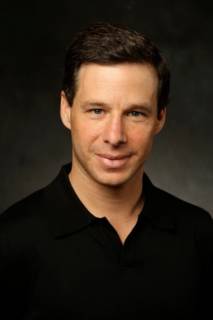
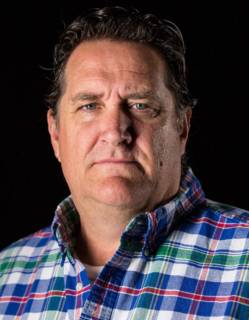
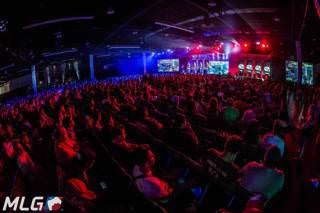 “If you look at the last few years, we’ve tried to incorporate—from a franchise level—a lot of key features that will go from game to game,” Puryear explained. “What we don’t want to do is create a situation where we’re presenting content in a different way. One of the features that we have is CODcaster, which gives our partners the ability to produce and broadcast matches in a uniform way. We have added different features to it, but we’re not necessarily changing how we broadcast every year. We’ve really tried our best to ensure that we’re packaging the league, how people view it, and the broadcast in a fairly uniform manner across the franchise so it’s not something that you need to learn over and over again. If you watch a Black Ops III match or Infinite Warfare, you might notice different maps, loadouts and weapons, but the overall feel of how the product is presented remains as consistent as possible from year to year.”
“If you look at the last few years, we’ve tried to incorporate—from a franchise level—a lot of key features that will go from game to game,” Puryear explained. “What we don’t want to do is create a situation where we’re presenting content in a different way. One of the features that we have is CODcaster, which gives our partners the ability to produce and broadcast matches in a uniform way. We have added different features to it, but we’re not necessarily changing how we broadcast every year. We’ve really tried our best to ensure that we’re packaging the league, how people view it, and the broadcast in a fairly uniform manner across the franchise so it’s not something that you need to learn over and over again. If you watch a Black Ops III match or Infinite Warfare, you might notice different maps, loadouts and weapons, but the overall feel of how the product is presented remains as consistent as possible from year to year.”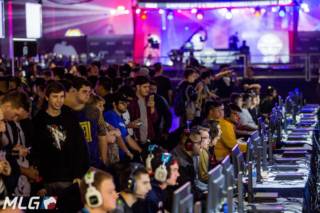 “It’s a great opportunity to reach a fan base that’s very tuned-in to the scene and getting to understand who these people are,” said Puryear. “The demographic is highly sought after, as far as traditional media is concerned. For me, the exciting part of the challenge—as we look at non-endemic advertisers and sponsors—is that they need to be incorporated into the scene and they need to feel like they’re part of the community. I think that as the CWL grows, more people will understand that this is a competition at its core and it’s entertainment.
“It’s a great opportunity to reach a fan base that’s very tuned-in to the scene and getting to understand who these people are,” said Puryear. “The demographic is highly sought after, as far as traditional media is concerned. For me, the exciting part of the challenge—as we look at non-endemic advertisers and sponsors—is that they need to be incorporated into the scene and they need to feel like they’re part of the community. I think that as the CWL grows, more people will understand that this is a competition at its core and it’s entertainment.
